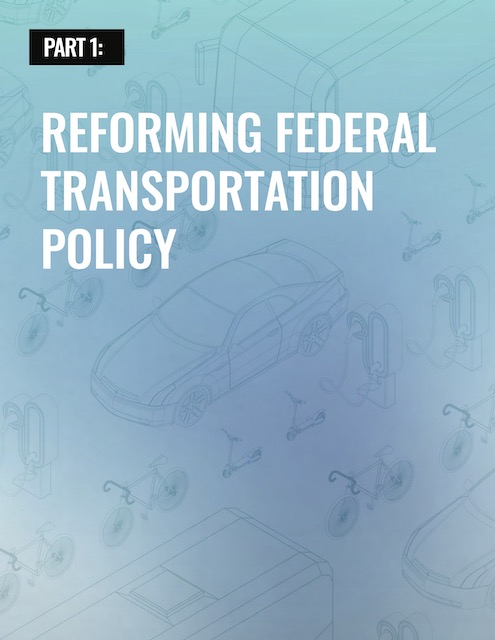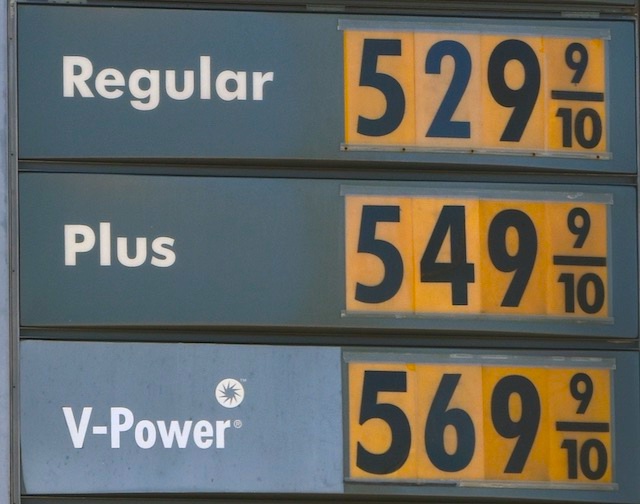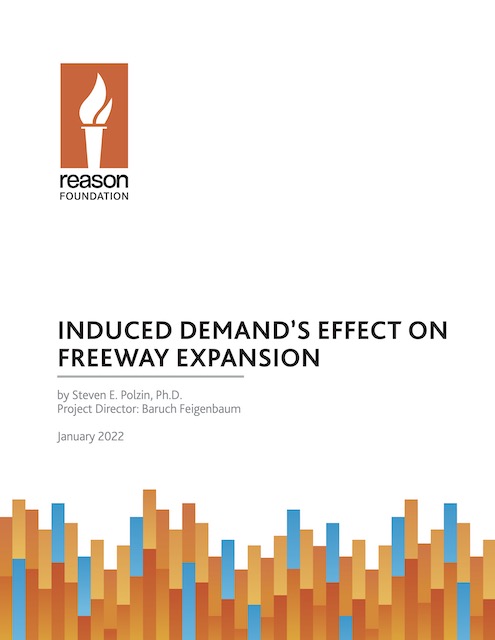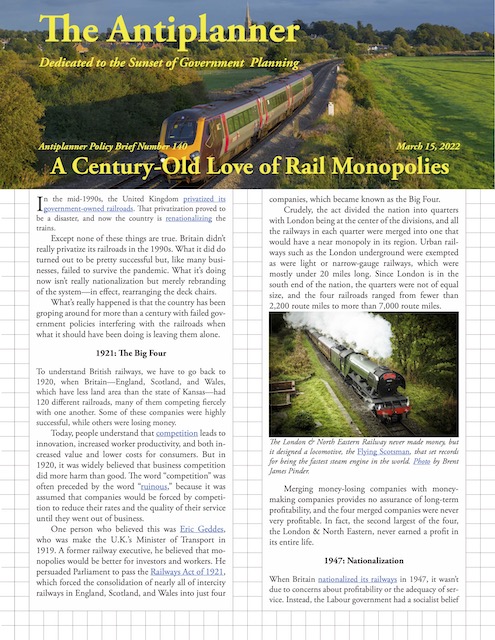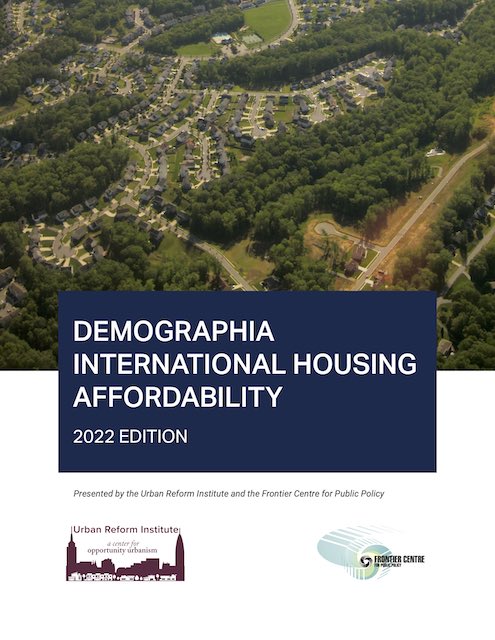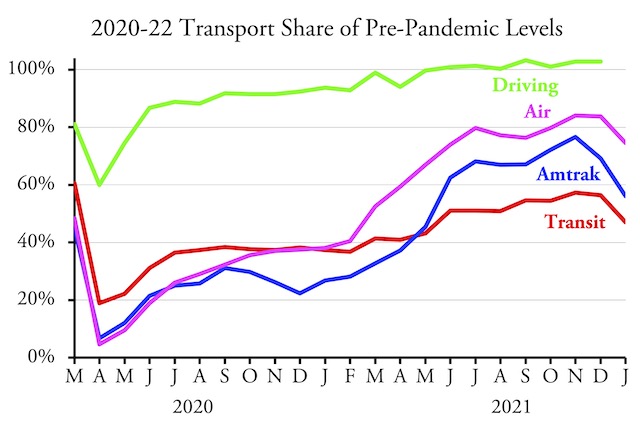Airlines carried Americans 77 percent as many miles of domestic travel in 2021 as they did in 2019, according to data recently released by the Bureau of Transportation Statistics. International air travel was still far short of pre-pandemic levels, being just 29 percent of 2019 numbers. The 578 billion miles of domestic air travel was about the same as in 2013, while the 1,743 miles per capita was slightly more than in 2003.
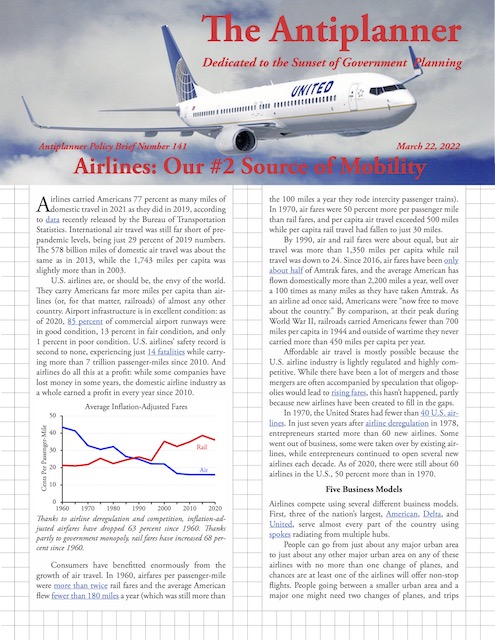 Click image to download a four-page PDF of this policy brief.
Click image to download a four-page PDF of this policy brief.
U.S. airlines are, or should be, the envy of the world. They carry Americans far more miles per capita than airlines (or, for that matter, railroads) of almost any other country. Airport infrastructure is in excellent condition: as of 2020, 85 percent of commercial airport runways were in good condition, 13 percent in fair condition, and only 1 percent in poor condition. U.S. airlines’ safety record is second to none, experiencing just 14 fatalities while carrying more than 7 trillion passenger-miles since 2010. And airlines do all this at a profit: while some companies have lost money in some years, the domestic airline industry as a whole earned a profit in every year since 2010. Continue reading

